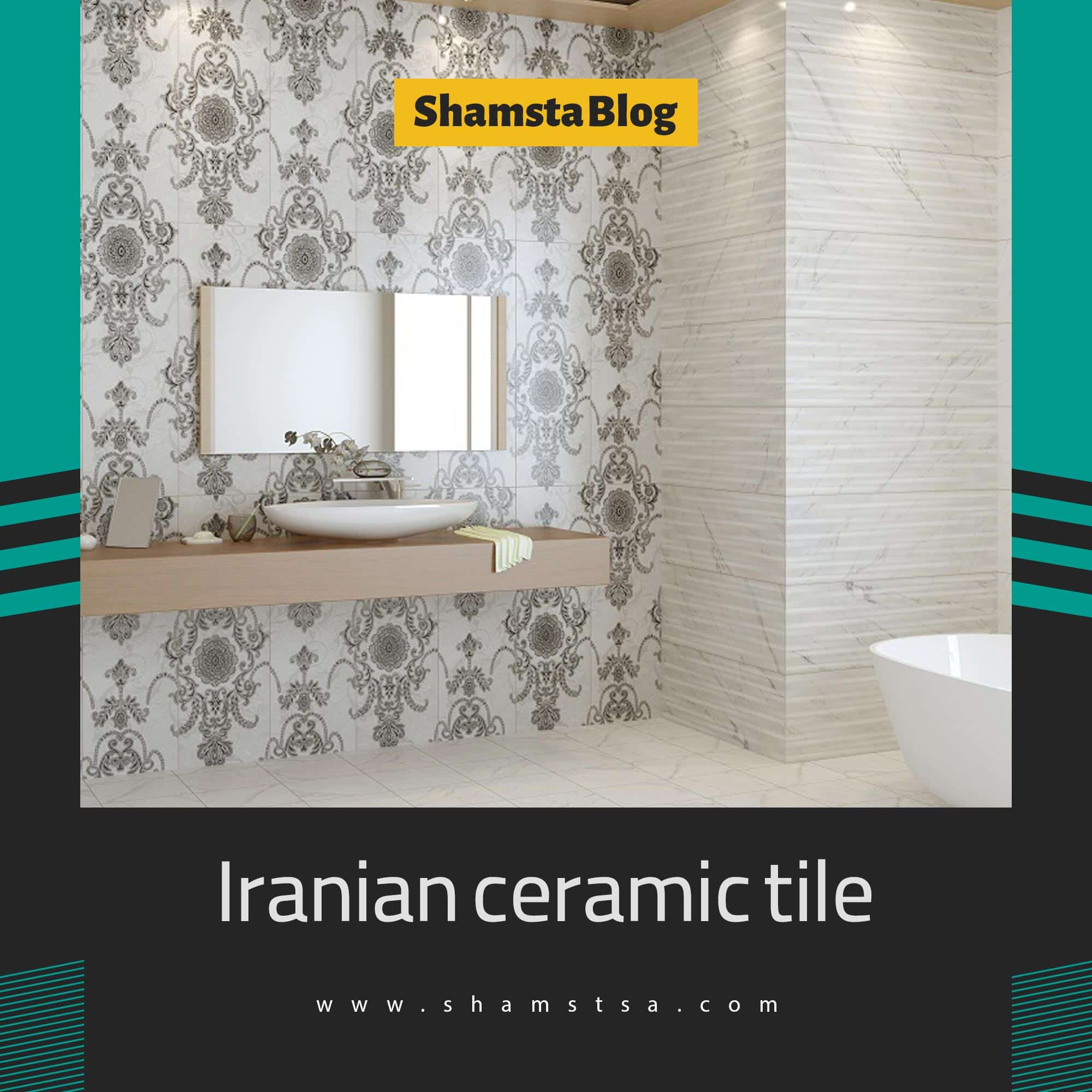
Ceramic tiles are one of the most popular materials used in building construction, particularly for flooring, wall coverings, and sometimes even for roofing. They are made from clay and other natural materials, which are molded into shape and fired in a kiln at high temperatures. This process gives ceramic tiles their durability, strength, and ability to resist moisture, stains, and wear
Shamsta as the biggest Iranian industrial supplier can supply your ceramic tile demands in differnt sizes, designs and brands with the best price. The common sizes are as: 30*60 , 30*90 , 60*60 , 50*50 , 40*120 , 60*120 , 80*80 , 100*100. You can order by click the below button.
Here’s a more detailed look at ceramic tiles in building construction:
Ceramic tiles are typically made from a mixture of clay, sand, and water. These materials are shaped into desired sizes and forms and then fired in a kiln at temperatures ranging from 900°C to 1,100°C (1652°F to 2012°F). This firing process causes the materials to harden and become durable. The surface of the tile can be glazed or unglazed, which affects its appearance and performance
Glazed Tiles: A layer of glaze is applied to the surface, creating a smooth, shiny finish. The glaze can come in various colors and patterns, providing aesthetic versatility. Glazed tiles are also more resistant to staining and are easier to clean
Unglazed Tiles: These tiles are porous and absorbent, making them more suitable for specific uses where moisture absorption is not a concern. Unglazed tiles often have a matte or textured finish
:There are several types of ceramic tiles, each designed for different purposes
Wall Tiles: These are typically thinner and lighter than floor tiles. They come in various sizes, shapes, and colors and are used for decorative purposes or covering surfaces in bathrooms, kitchens, and living spaces
Floor Tiles: These tiles are thicker and stronger to withstand heavy foot traffic and pressure. They are often larger in size than wall tiles
Mosaic Tiles: Small tiles, often square or rectangular, arranged in intricate patterns. They are commonly used in bathrooms, backsplashes, and decorative borders
Porcelain Tiles: A subset of ceramic tiles, porcelain tiles are made from more refined clay and fired at higher temperatures. They are denser and more durable than standard ceramic tiles, making them ideal for both indoor and outdoor applications
Durability: Ceramic tiles are hard and long-lasting. They are highly resistant to scratches, chips, and stains, making them ideal for high-traffic areas
Low Maintenance: Once installed, ceramic tiles are easy to clean and maintain. They do not require special treatments, and spills can be wiped away without leaving stains
Moisture Resistance: The surface of ceramic tiles is resistant to moisture, making them an excellent choice for wet areas such as bathrooms, kitchens, and laundry rooms
Aesthetic Appeal: With a wide variety of colors, sizes, shapes, and finishes, ceramic tiles provide numerous design options, from modern and sleek to rustic and traditional
Cost-Effective: Compared to other flooring and wall materials like marble, granite, or hardwood, ceramic tiles are relatively affordable while still offering durability and style
Sustainability: Ceramic tiles are made from natural materials and are often recyclable, making them an environmentally friendly option for building construction
Flooring: Ceramic tiles are commonly used for flooring in residential, commercial, and industrial buildings. They are ideal for areas prone to moisture or high traffic, such as kitchens, bathrooms, hallways, and entryways
Walls: Ceramic tiles are frequently applied to walls in kitchens, bathrooms, and other areas where they can add a decorative element while providing moisture resistance. They're often used in backsplashes, showers, and feature walls
Exterior Use: Porcelain and other dense ceramic tiles are used in outdoor settings, such as patios, balconies, and pool areas, because of their ability to withstand weather conditions without deteriorating
Commercial Spaces: Ceramic tiles are popular in commercial settings due to their ability to endure heavy foot traffic, easy maintenance, and aesthetic variety. They can be used in retail stores, restaurants, hotels, and office spaces
Installation: Ceramic tiles are generally installed using a cement-based adhesive or thin-set mortar. The tiles are placed on a clean, level substrate (like concrete or cement board), with grout filling the spaces between them. Proper installation requires skill to ensure that the tiles are aligned and spaced correctly
Maintenance: Ceramic tiles are low-maintenance. To maintain their appearance, regular sweeping or vacuuming and occasional mopping are usually enough. For glazed tiles, a simple wipe-down with a mild cleaner will suffice. Unglazed tiles may require sealing to prevent staining and moisture absorption
Brittleness: Although ceramic tiles are durable, they can crack or chip if subjected to heavy impact, such as dropping a heavy object
Cold Surface: Ceramic tiles can be cold to the touch, which may not be desirable in colder climates, especially for flooring. However, underfloor heating can mitigate this issue
Hardness: Ceramic tiles can be hard on the feet and may not be ideal for areas where people stand for long periods, such as kitchens or offices. Adding area rugs can help improve comfort in these areas